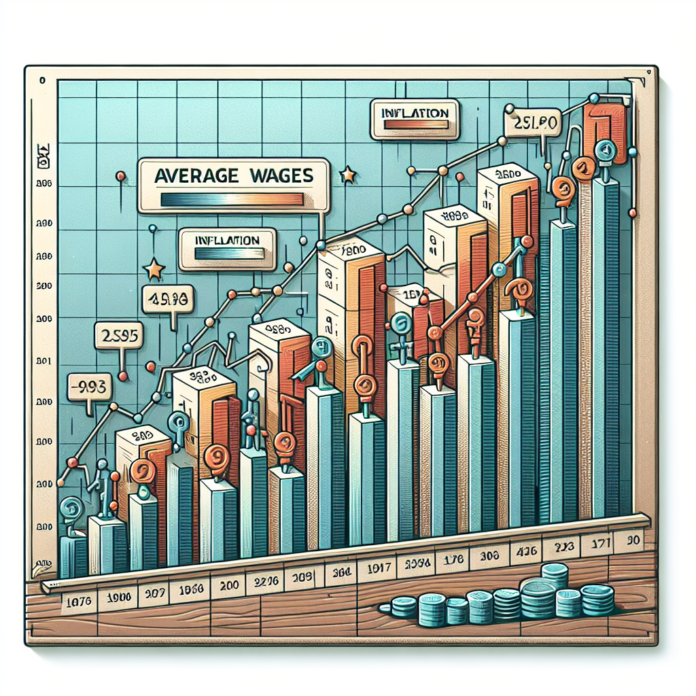Inflation and wage growth are two critical indicators of economic health, often intertwined in a complex relationship. While wage growth is a sign of an improving economy and can boost consumer spending, excessive increases may lead to inflationary pressures. Conversely, inflation can erode purchasing power if wages do not keep pace. This article delves into the dynamic correlation between wage growth and inflation, and what it means for the economy at large.
What Happens When Wages Grow?
An uptick in wage growth generally indicates that employers are willing to pay more to attract and retain skilled workers. This can be a boon for the economy as it may lead to increased consumer spending, but it may also raise the cost of goods and services. Businesses, facing higher labor costs, often pass these costs onto consumers—potentially triggering inflation.
Insights into current wage growth trends can be sourced from comprehensive labor market analyses provided by platforms like the U.S. Bureau of Labor Statistics (BLS).
Inflation: Eating into Earnings
Inflation measures the rate at which the general level of prices for goods and services is rising. If inflation outpaces wage growth, workers’ purchasing power declines—what they can buy with their earnings falls, despite nominal wage increases. Thus, sustainable wage growth should ideally be in line with or exceed the rate of inflation to maintain or increase living standards.
For real-time inflation data across the nations, entities like Trading Economics provide valuable insight and keep a pulse on economic changes.
The Wage-Price Spiral: A Balancing Act
A particularly challenging scenario is the wage-price spiral, where wages and prices rise in tandem, each fueling the other. As workers demand higher wages to keep up with the cost of living, businesses may continue to raise prices to cover the increased labor costs, creating a feedback loop that can be difficult to control.
Leading economic research institutes such as the National Bureau of Economic Research (NBER) offer in-depth studies on these phenomena, capturing a broad range of scenarios that influence wage and price dynamics.
Central Bank Policies to Mitigate Inflation
Central banks closely monitor the relationship between wages and inflation when setting monetary policy. If wage growth leads to rapid inflation, central banks may raise interest rates to cool off the economy. Such policy responses aim to strike a delicate balance between supporting economic growth and preventing runaway inflation.
Economic think-tanks like the Brookings Institution often provide analysis and discussion around policy effectiveness and economic outcomes related to central bank decisions.
Conclusion
The dance between wage growth and inflation is nuanced and ever-changing. Understanding its rhythms is crucial for policymakers, businesses, and workers alike. While robust wage growth can serve as a harbinger of economic prosperity, it can also herald inflation that undermines that very prosperity. Steady, sustainable wage growth in line with productivity is the ideal path, ensuring that living standards rise without precipitating a spiral of escalating prices. As we navigate the ebbs and flows of the economy, keeping a close eye on the interplay between these two economic forces is key to fostering a resilient and thriving economic environment.




 AGF-B.CO
AGF-B.CO